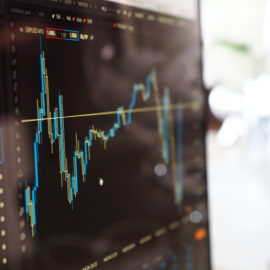
What is a platform business model? What are the unique characteristics of platform models?
Platforms emerged at the turn of the 21st century as a novel business model that connects producers with consumers. The book Platform Revolution describes pipelines—the business model that dominated before platforms came about—and explains how platforms differ from pipelines.
Keep reading to learn more about the revolutionary platform business model.
Pipelines Preceded Platforms
What is a platform business model? Before we dive into the platform business model, let’s discuss the traditional business model that came before it, which Parker, Van Alstyne, and Choudary refer to as a “pipeline.” In a pipeline business model, a series of producers connect with each other to create a product that ends up in the hands of the consumer. To illustrate, think about how a wool sweater is made and sold—a shearer harvests wool from sheep, a processor turns that wool into yarn, a manufacturer turns that yarn into a knit sweater, and a retailer sells it to a consumer. The authors explain that for hundreds of years, most businesses relied on pipelines to create and sell their products, so pipelines became the default business model.
(Shortform note: In Understanding Michael Porter, Joan Magretta shares additional context we can use to understand pipelines. She says according to economist Michael Porter, each company has its own value chain—the sequence of activities that incrementally add value to the product (for example, a wool processor might wash, then blend, then dye wool before spinning it into yarn). Each company’s value chain is part of a larger value system (the shearer, wool processor, sweater manufacturer, and retailer are all part of one value system). This larger value system is what Parker, Van Alstyne, and Choudary call the “pipeline,” a term that connotes gradual development as products are conveyed from one producer to the next.)
In contrast, platforms are businesses that facilitate direct connections between users (producers and consumers) for their mutual benefit. A farmer’s market, for example, is a platform because producers and consumers can cut out the middlemen (like grocery retailers) and do business together. The authors explain that around the turn of the 21st century, platforms became dramatically more popular because the technology boom created more opportunities for producers and consumers to interact. For example, eBay was founded in 1995 as an online marketplace where consumers could buy directly from producers instead of going to a pipeline-based retail outlet. Digital platforms like eBay are the focus of this book.
(Shortform note: The technology boom that made platforms like eBay possible and profitable was fueled by investors seeking to capitalize on the potential of the World Wide Web—whose 1992 release created an unprecedented world of digital communications and information sharing—to revolutionize the marketplace. Investors’ fervency led to the bursting of the 2000 dot-com bubble, which posed serious challenges for many of these platforms. (eBay survived because it was a platform—which, as we’ll discuss, means it outsourced its labor—not a traditional retailer operating online). Some experts speculate that another tech bubble could burst in 2024, which could explain why tech giants including eBay are engaging in mass layoffs.)
Platforms’ Unique Characteristics
Parker, Van Alstyne, and Choudary state that in addition to facilitating direct producer-consumer connections, platforms differ from pipelines in three important ways. Let’s explore those differences now.
Platforms Leverage Network Effects
According to the authors, platforms owe their success to their ability to leverage an economic phenomenon known as “network effects,” where the number of people involved in a market affects the market’s value. To illustrate, compare the social media platforms BeReal and Instagram—BeReal is less valuable than Instagram because fewer people use it. Due to the low quantity of users, there are fewer opportunities for engagement and interaction—the whole point of social media—compared to Instagram.
Network effects can be positive or negative for producers and consumers. For example, if you’re a handyperson on the labor platform TaskRabbit and more handypeople join, you might receive fewer requests for your services. This may benefit you if you receive fewer requests for jobs you lack enthusiasm or know-how for, or it may harm you by decreasing your earnings. An increase in the number of handypeople may also affect the platform’s value to consumers—for example, with more people, a consumer may be more or less likely to find the labor they need, depending on whether the new handypeople have the skills they’re looking for. Parker, Van Alstyne, and Choudary explain that successful platforms account for all of these variables and leverage network effects to maximize benefits for as many users as possible.
Platforms Outsource Operations
Another factor that contributes to platforms’ success is their ability to outsource operations. In pipeline businesses, the business must own or lease the resources needed to create and sell its product to consumers, which is expensive. For example, to sell a wool sweater, a retailer has to buy it from the manufacturer and buy or lease space to store and sell the product. In contrast, platforms outsource operating costs and procedures to the suppliers in their network. For example, instead of buying and paying to store inventory, the secondhand marketplace Poshmark outsources those responsibilities to individual sellers. Parker, Van Alstyne, and Choudary explain that outsourcing makes platforms cheaper to maintain and, therefore, easier to grow.
Platforms Optimize Connections
Finally, Parker, Van Alstyne, and Choudary state that platforms are successful because their design enables them to optimize producer-consumer connections. This occurs in two ways: First, by outsourcing operations, platforms remove barriers to participation. (For example, journalists don’t need to be formally hired by newspapers if they can freely access publishing platforms.) This introduces variety, spontaneity, and innovation into the market, which makes it more likely that consumers will connect with the producers that best meet their needs and vice versa. Second, platforms utilize user data to ensure that the connections they recommend are relevant to users’ interests, enhancing the value they offer to both producers and consumers.






